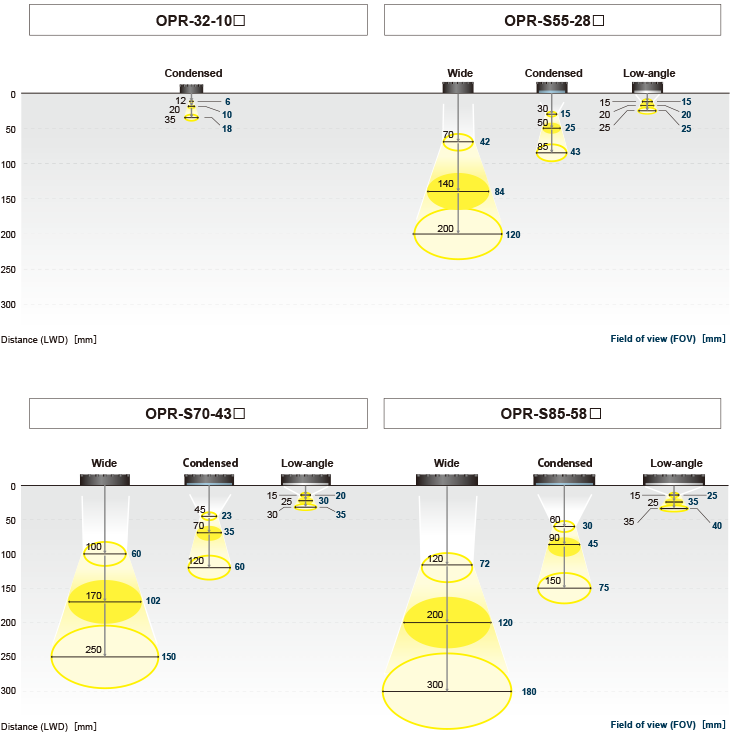Sensing LED Ring LightingOPR Series
“FALUX sensing” enables monitoring of brightness and feedback control
- Using the attachment lens allows switching between 3 illumination angles
- Two to three times the amount of light of conventional models with improved uniformity of illumination distribution
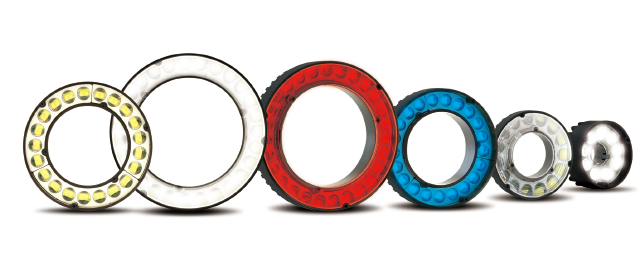
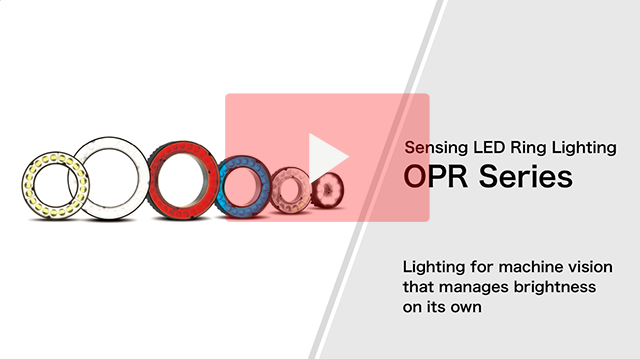
Built-in “FALUX” brightness variation correction circuit *Included in all models.

Using the constant current circuit dependent on the input voltage, variations in the forward current of individual LEDs are corrected for uniform brightness.
Meanwhile, the temperature compensation circuit compensates for fluctuations in brightness due to increases in temperature after lighting or changes in the ambient temperature.
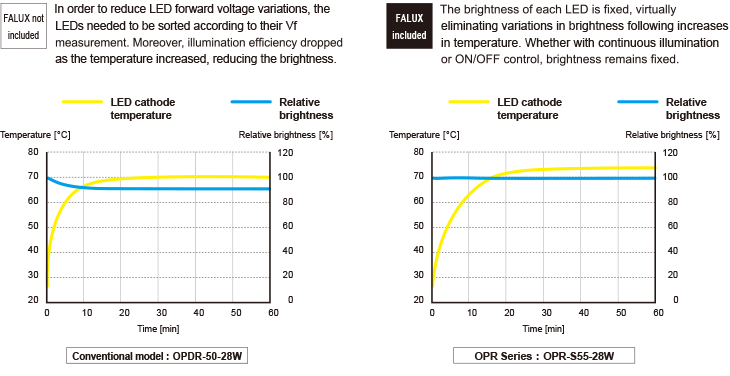
Equipped with “FALUX sensing” for monitoring
brightness and temperature through sensing
*Excluding OPR-32-10☐
-
LED brightness sensing is performed using multiple built-in photodiodes.
This allows for accurate measurement of LED brightness not only during continuous illumination but also with short period illumination.
Absolute brightness is stored in the lighting’s internal memory to allow for instrumental error adjustment.
“FALUX sensing” also makes it possible to measure both the LED brightness of lighting and the internal temperature, and then to monitor those measurements on the power supply side.
Based on the monitored values, feedback control can also be performed from the OPPF Series controller, making it possible to maintain the factory default brightness for around 40,000 hours.
-

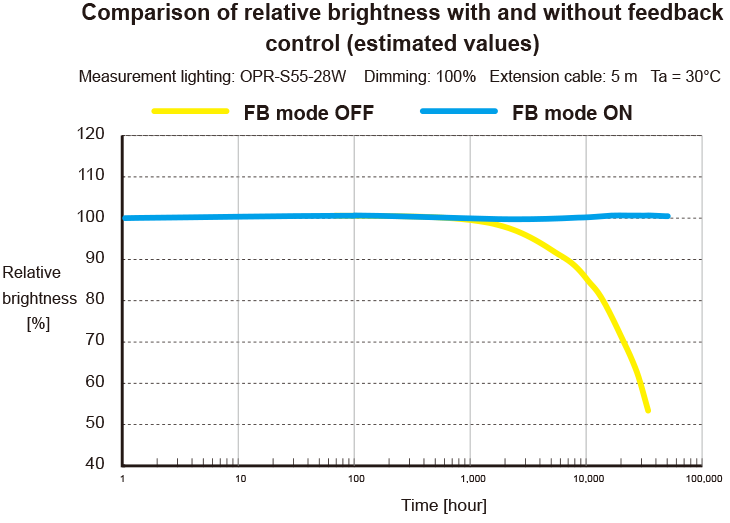
3-way illumination with attachment lenses ? wide, condensed, and low-angle
The aluminum die-cast case is equipped with an LED board with a built-in sensor.
The first fixed lens optimizes the directivity angle of the LED, and the attachment lens can be used to switch the illumination angle.
At the same time, the fixed lens guides the light toward the photodiodes, which makes highly accurate sensing possible.
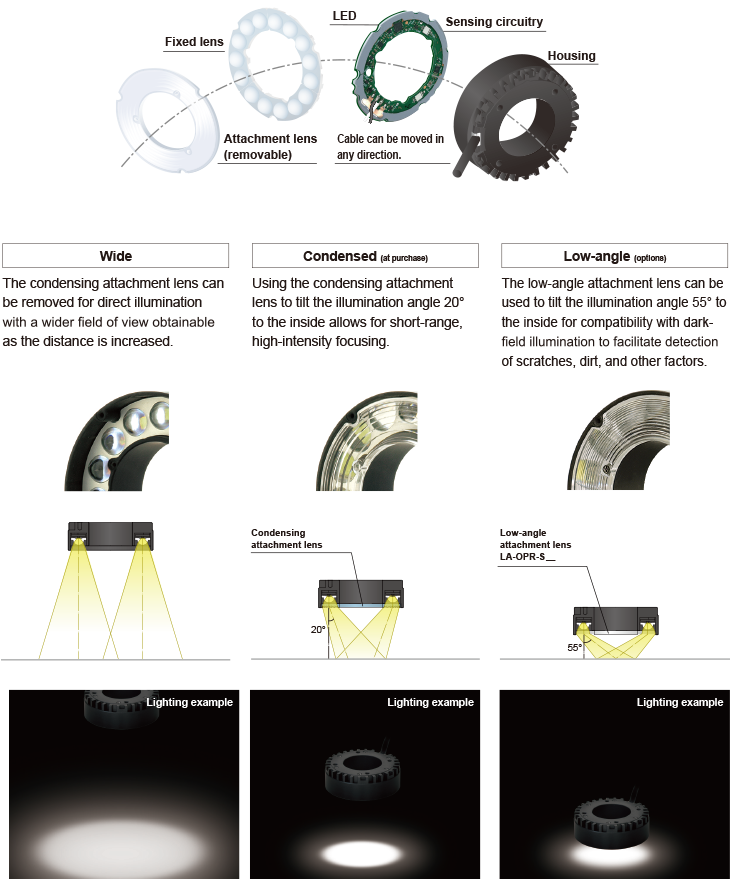
Lighting Work-Distance (LWD) and Field of View (FOV)
The optimal light working distance and field of view can be selected in the condensed and low-angle modes with the attachment lens attached or in the wide mode with the lens removed.
